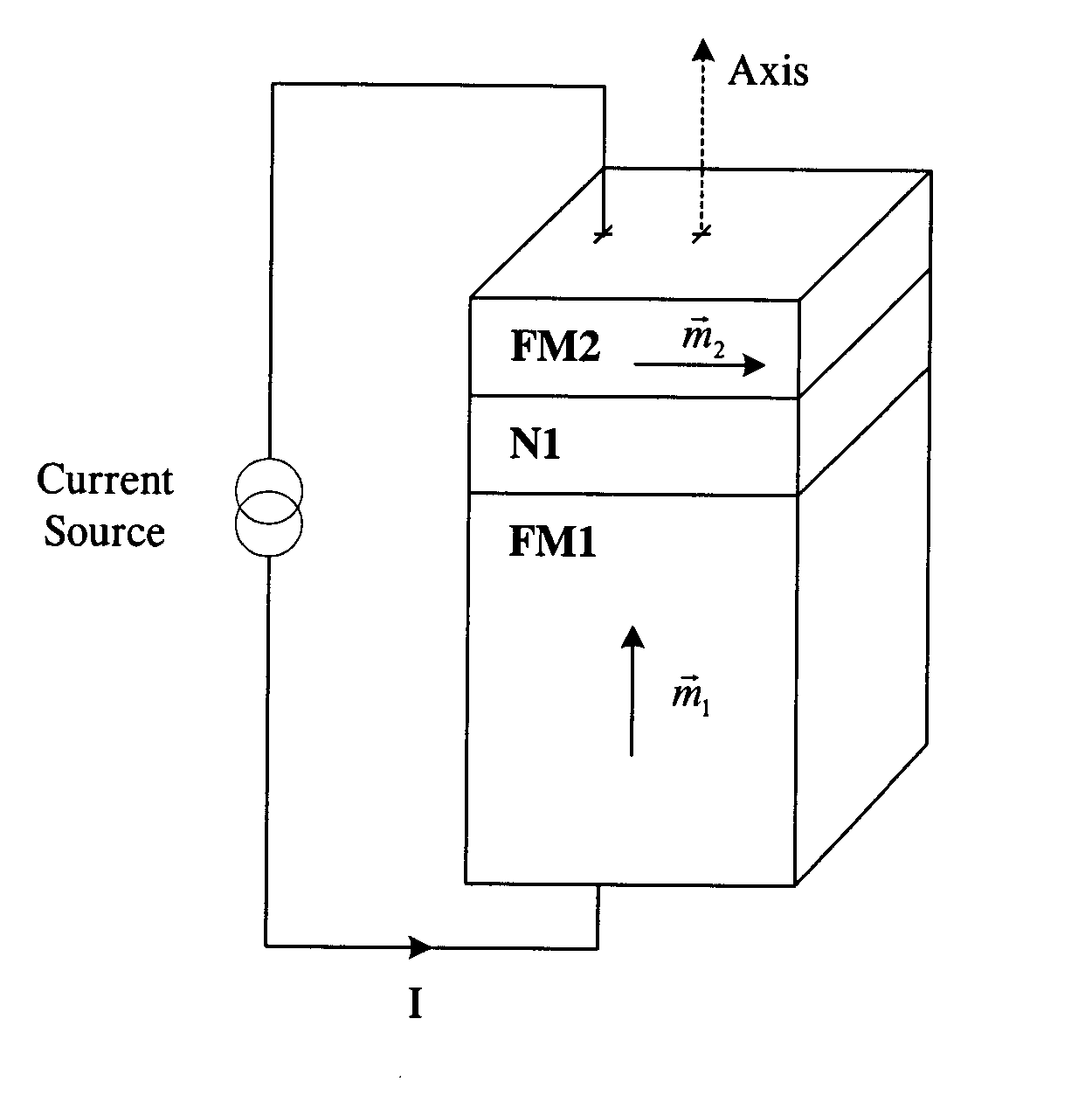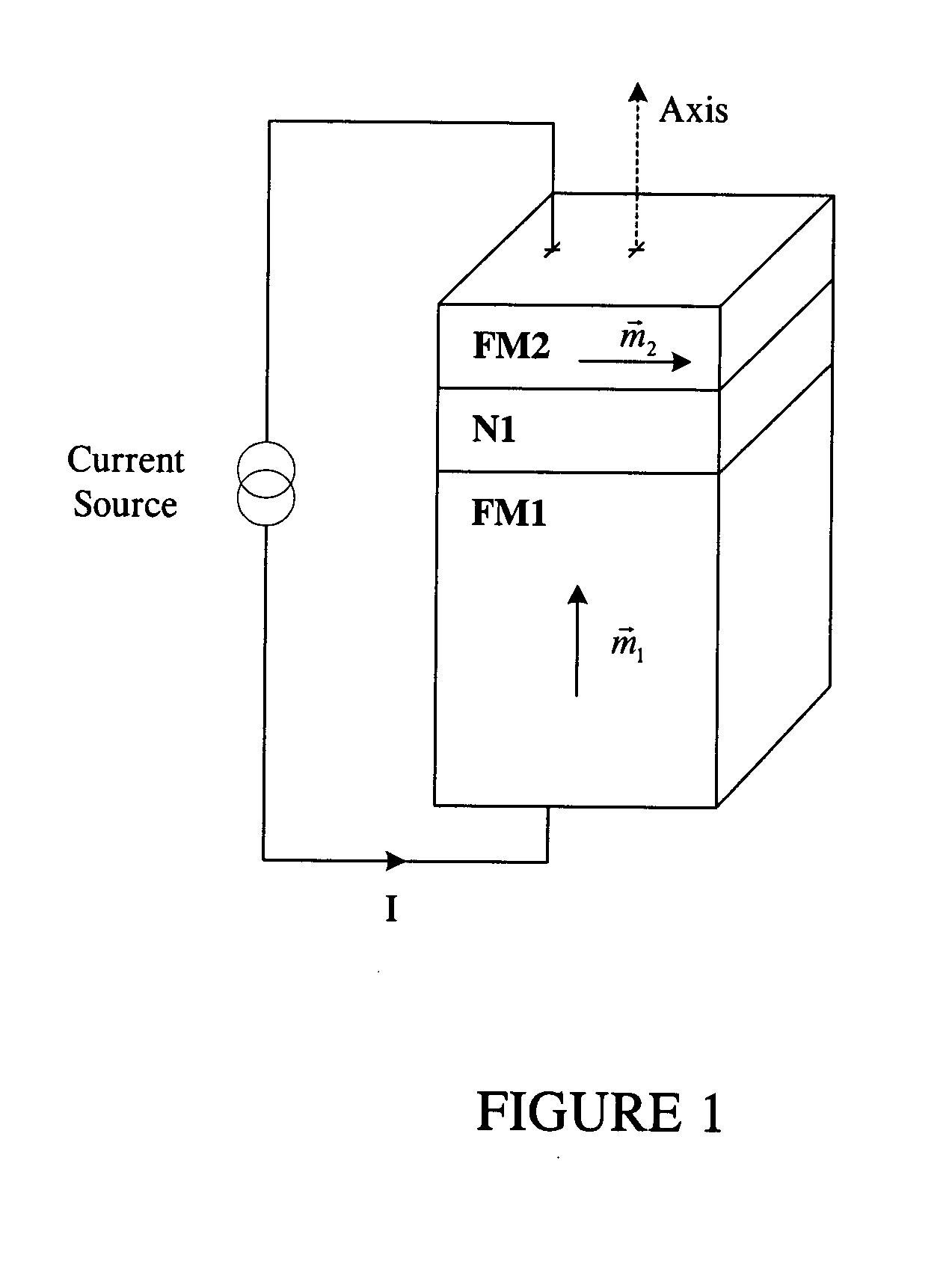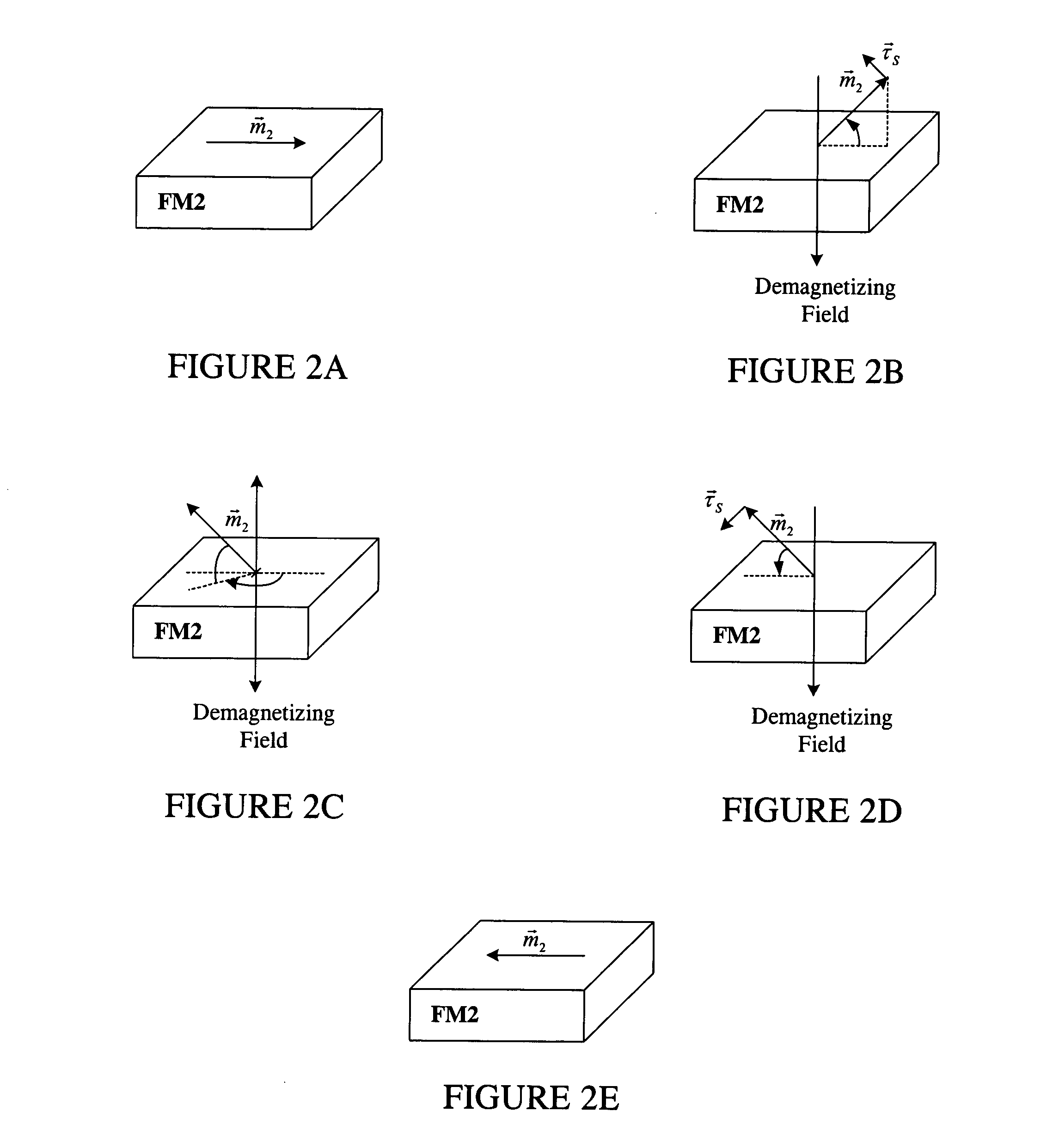High speed low power magnetic devices based on current induced spin-momentum transfer
- Summary
- Abstract
- Description
- Claims
- Application Information
AI Technical Summary
Benefits of technology
Problems solved by technology
Method used
Image
Examples
example
[0069] The operation of the magnetic device was simulated using Landau-Lifzshitz Gilbert equations including a spin-transfer torque.
[0070]FIG. 8 shows the amplitude of the current input applied to the magnetic memory device starting at an initial time t=0 and ending at t=30 picoseconds. This current input comprises two current pulses similar to the current input shown in FIGS. 3A and 6A.
[0071] A 16-picosecond positive current pulse is applied to the magnetic memory device to start the precession of the magnetization vector {right arrow over (m)}2 of the free magnetic layer FM2. After this 16-picosecond current pulse, a 14-picosecond negative current pulse is applied to the magnetic memory device to stop the precession of the magnetization vector {right arrow over (m)}2 of the free magnetic layer FM2 to achieve a desired state of the magnetization vector {right arrow over (m)}2. For magnetic memory devices, the precession is stopped after achieving a 180° rotation of the magnetizat...
PUM
 Login to View More
Login to View More Abstract
Description
Claims
Application Information
 Login to View More
Login to View More - R&D
- Intellectual Property
- Life Sciences
- Materials
- Tech Scout
- Unparalleled Data Quality
- Higher Quality Content
- 60% Fewer Hallucinations
Browse by: Latest US Patents, China's latest patents, Technical Efficacy Thesaurus, Application Domain, Technology Topic, Popular Technical Reports.
© 2025 PatSnap. All rights reserved.Legal|Privacy policy|Modern Slavery Act Transparency Statement|Sitemap|About US| Contact US: help@patsnap.com



